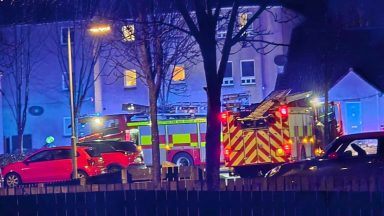After a few months of respite over the summer, the threat of Covid-19 is rising again.
The UK’s four chief medical officers warned the transmission rate is rising, meaning much tougher social distancing measures could be on the way.
But what is the alert system and how does it work?
What is the alert system?
The Covid Alert Levels system was announced by Prime Minister Boris Johnson in a televised address to the nation back in May. The system is similar to that used to establish the terrorist threat and run by the recently established Joint Biosecurity Centre (JBC).
It has five tiers from level one to five based on the spread of Covid-19 through the country.
What is the Joint Biosecurity Centre?
The JBC was set up a few months into the pandemic to provide real-time analysis of Covid-19 outbreaks and the rate of spread at both a local and national level.
It advises on specific actions which can be taken to manage rising numbers of infections, such as closing schools or businesses, as well as the risk posed by travellers arriving from abroad.
It also provides evidence to the chief medical officers of each of the UK’s four countries, allowing them to decide if a change of alert level is necessary.
How does the alert system work?
The country’s alert level is determined primarily by the virus’s reproduction rate or “R rate” – the average number of people that will contract Covid-19 from an infected person.
It is also based on the overall number of coronavirus cases.
The higher the level, the stricter measures the Government is likely to impose in a bid to get the virus under control.
What are the different levels?
Level one means Covid-19 is no longer known to be in the UK and the only action should be “routine international monitoring”, while level two is when the number of cases and transmission is low and “no or minimal” restrictions are required.
When the scheme was launched, the country was at level four, which means a “Covid-19 epidemic is in general circulation, transmission is high or rising exponentially”.
It was reduced down to level three on June 19, meaning the epidemic is still in general circulation but restrictions can be eased.
Level five is when transmission is high or rising but also when there is a risk of healthcare services being overwhelmed.
Why has the threat level been upgraded again?
A second wave, potentially as lethal as the first, is imminent according to the UK’s most senior scientists.
Sir Patrick Vallance, the Government’s chief scientific adviser, said on Monday the UK could be facing 50,000 new coronavirus cases a day by mid-October and a daily death toll of 200 by mid-November unless rapid action is taken.
He and England’s chief medical officer Chris Whitty warned Britons to brace for a “tough six months” as the virus might spread more easily during the colder weather.
Are we are facing another national lockdown?
The Government has yet to announce what the change in threat level means for the general public, but it will be hugely reluctant to impose the same level of restrictions we saw imposed in March.
Boris Johnson is due to chair meetings of Cabinet and the Cobra emergency committee – including the leaders of the devolved administrations – on Tuesday to consider what action to take.
Earlier on Monday, Health Secretary Matt Hancock refused to guarantee pubs in England would be allowed to open this weekend, but said the Government was “determined” to keep schools open during the next phase of the response.
Follow STV News on WhatsApp
Scan the QR code on your mobile device for all the latest news from around the country


 Pixabay
Pixabay























